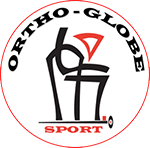Abstract
Introduction
In 1995, our team modified the Latarjet-Patte procedure by associating “south-north” capsule retention with reinsertion to the edge of the glenoid cavity to the coracoid bone-block.
Hypothesis
The present minimum 10-year follow-up study tested the hypothesis that the rate of osteoarthritis could be reduced by the strictly extra-articular position of the bone-block and stability be enhanced by the associated Bankart effect.
Material and method
Between January 1995 and December 2001, 78 shoulders were stabilized using the modified Latarjet-Patte procedure in 76 patients with a mean age at surgery of 26.7 years; 89.7% could be followed up, 82.8% of whom also had radiographic follow-up. Fifty-nine were sports players, including 25 at competition level. Stability was assessed on a questionnaire, any dislocation or subluxation being counted as recurrence.
Results
At a mean 13 years’ follow-up (range, 10–15 years), there had been no revision surgery. Mean Duplay score was 82.6, mean Subjective Shoulder Value 91.9% and the satisfaction rate 98.5%. The recurrence rate was 1.4% and 10 patients reported residual apprehension. The osteoarthritis rate was 8.5%. Seven bone-blocks projected, but only one was associated with osteoarthritis (stage 1) (non-significant). There were 4 non-unions and 9 lyses, without instability or pain.
Discussion
The modified procedure provided a low rate of recurrence and an incidence of osteoarthritis (8.5%) much lower than in any other published series with a minimum 10 years’ follow-up. The strictly extra-capsular situation of the bone-block appeared as an important factor in limiting long-term osteoarthritis. Capsule reinsertion also seemed to alleviate the radiologic complications.
Level of evidence
IV, retrospective study.
Pour lire la suite de l’article : French Latarjet Procedure



